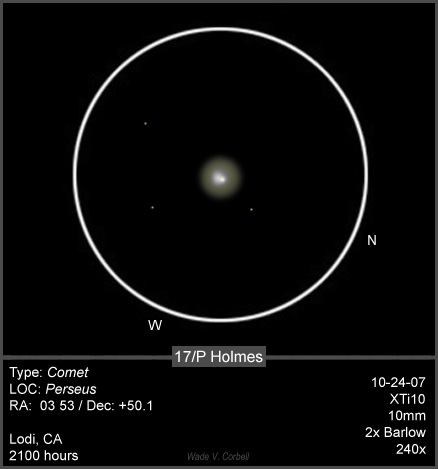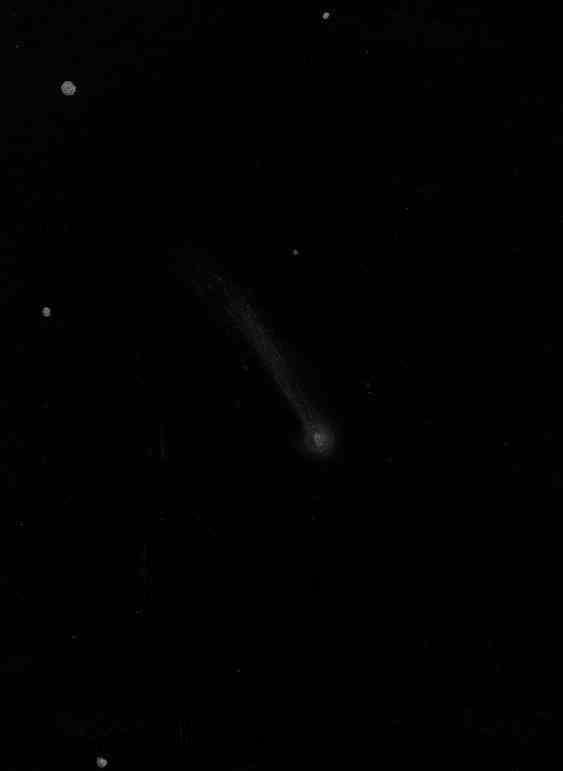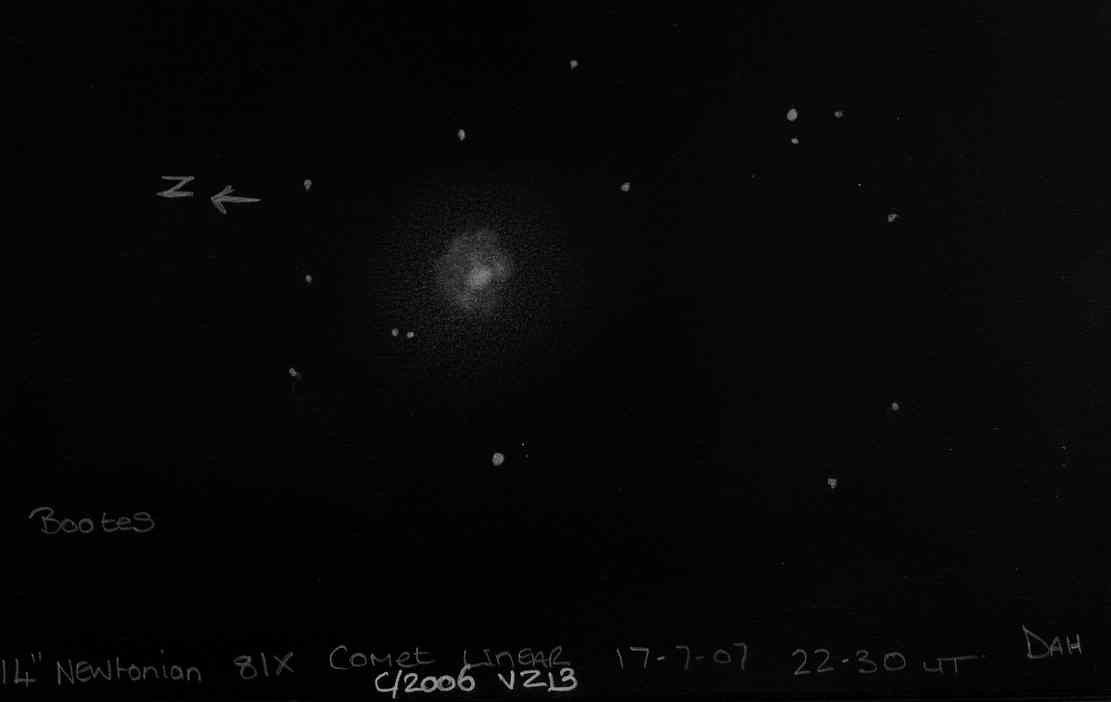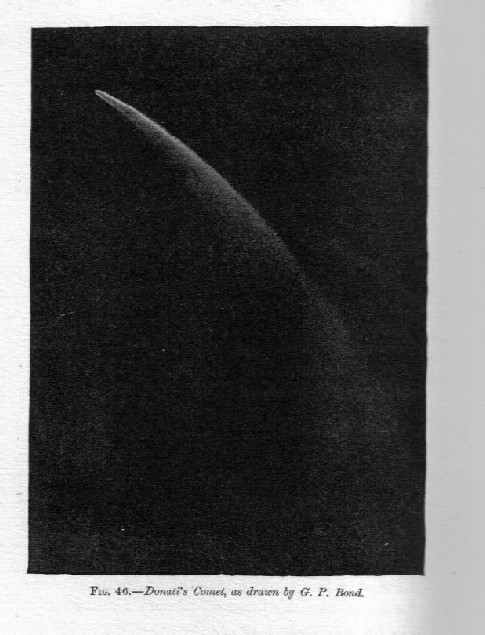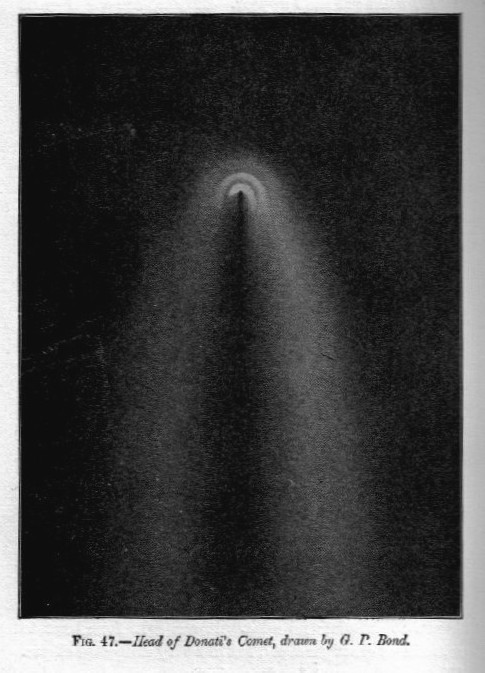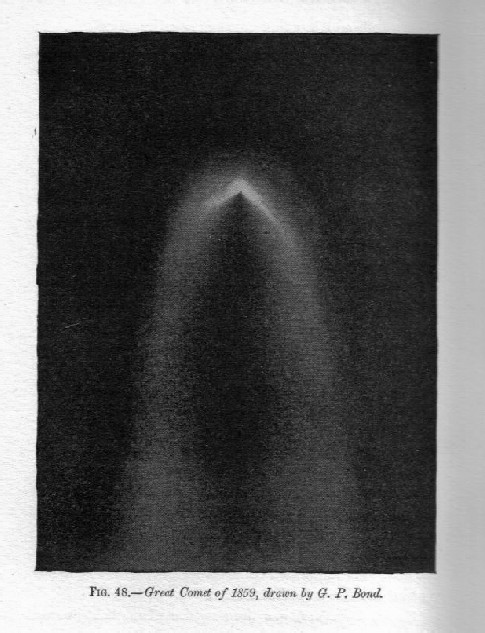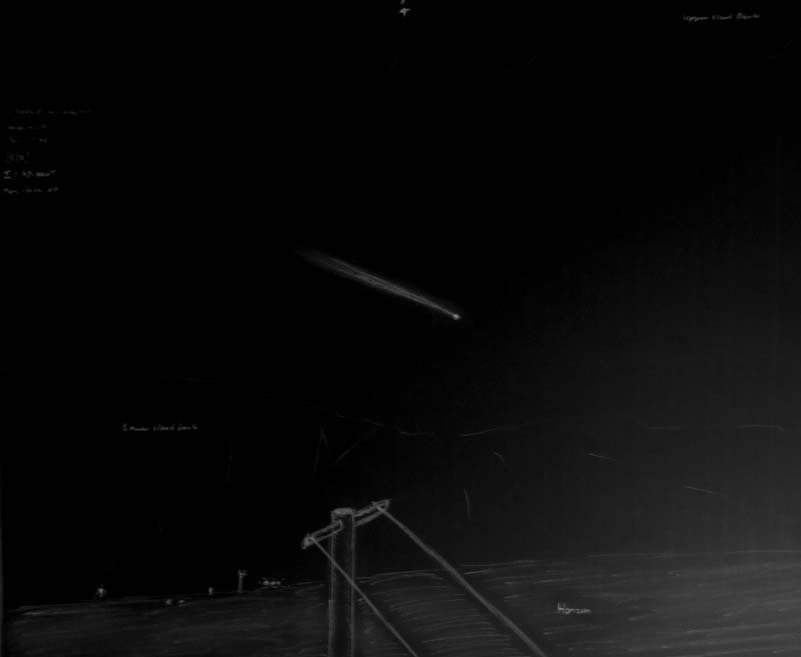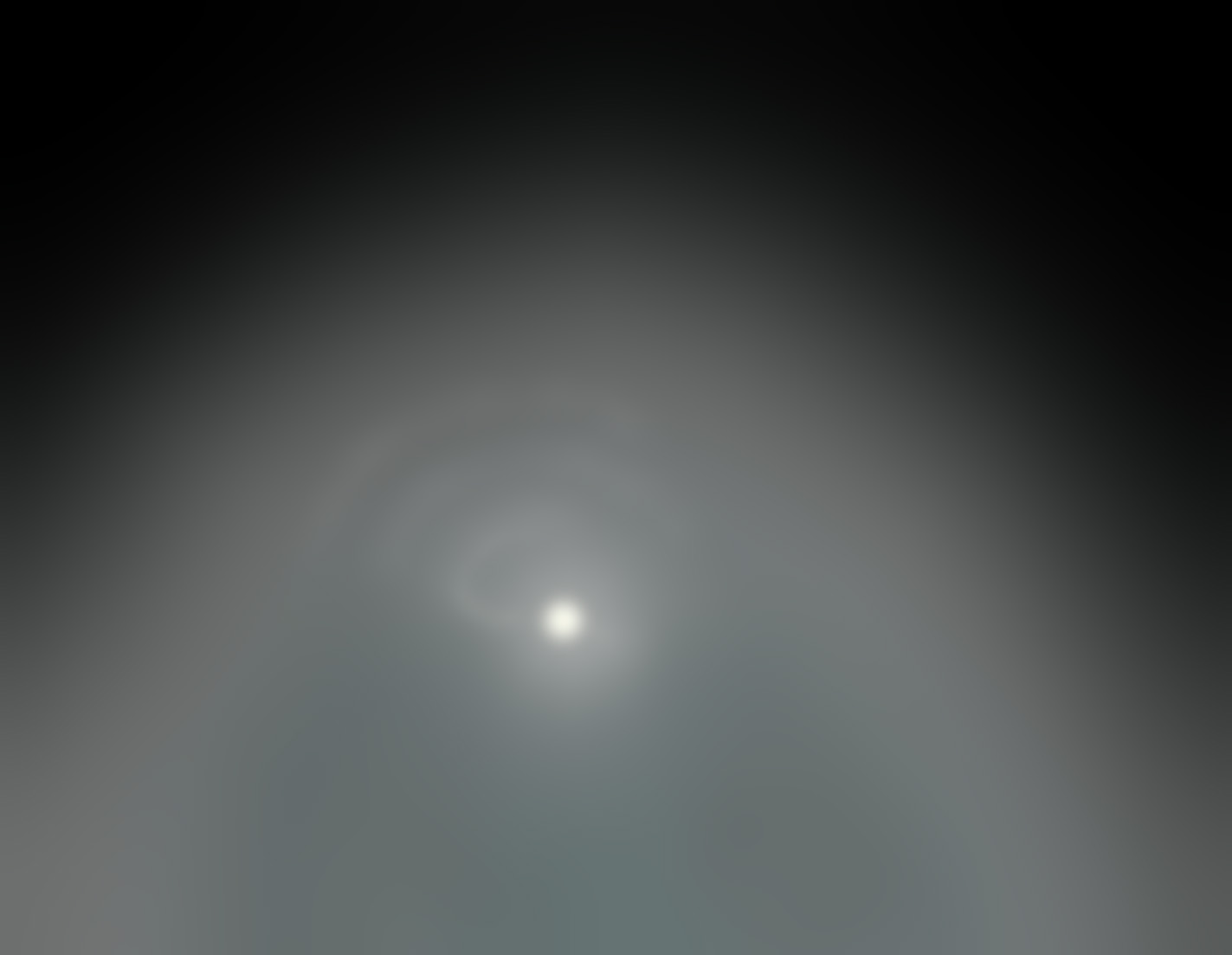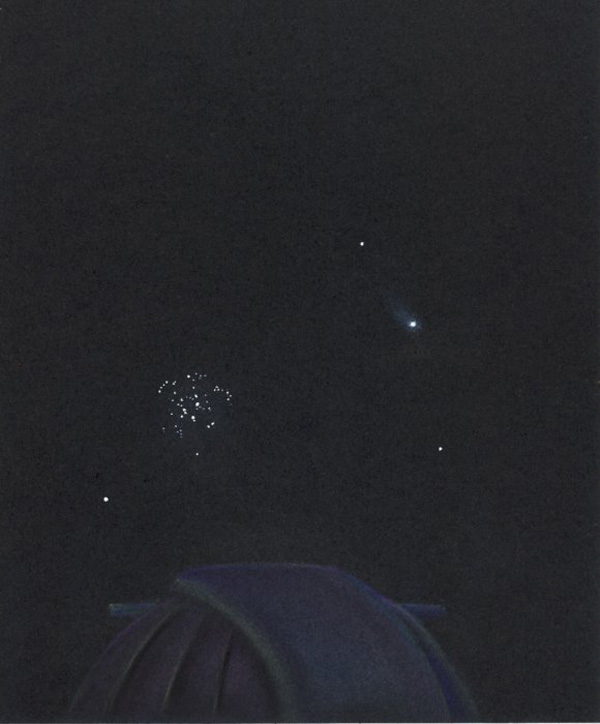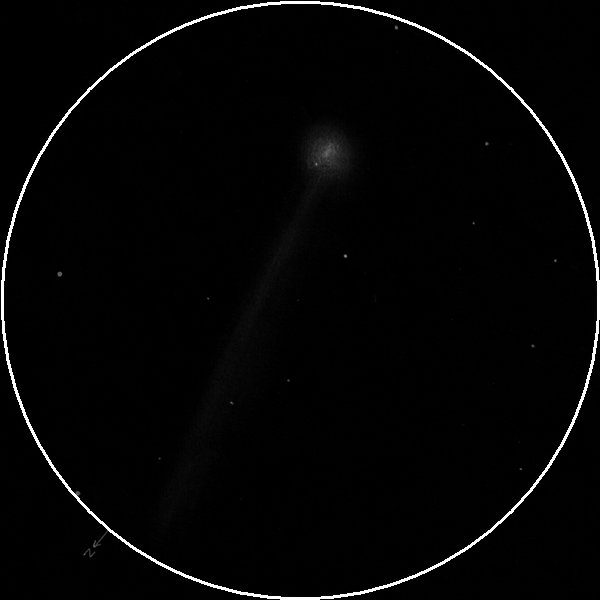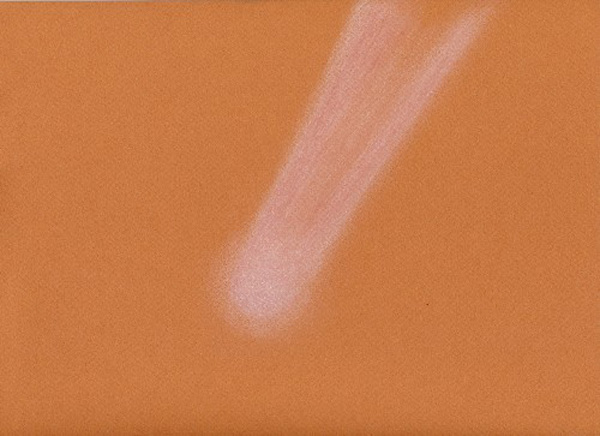Comet 17/P Holmes
I just couldn’t resist doing a quickie of this very unexpected object. As you may know, comet 17/P Holmes went from an unobscure magnitude 17 to 2.8 in just a little more than 24 hours…which it is now easily seen naked-eye in the constellation Perseus!! The coma is very bright and just a tad off-center, and the surrounding gases are emitting a slight off-yellow color. This comet does not (at present time) display the familiar “tail” that we are used to seeing with other comets, but this is still spectacular to see. Grab your scopes and head outside to see this beauty!!!
I will be observing this excellent and unexpected comet throughout the night and complete many sketches of this comet with differnt EP’s/magnifications. But for now, here is what it is looking like:
Wade V. Corbei
Lodi, California

